|
|

|
|
Author
|
Topic: NASA solicits for new Artemis spacesuits
|
Robert Pearlman
Editor Posts: 52647
From: Houston, TX
Registered: Nov 1999
|
 posted 07-28-2021 05:16 PM
posted 07-28-2021 05:16 PM
   
NASA release NASA Empowers Industry in Spacesuit Plan for Artemis, Space StationArtemis moonwalkers exploring on the lunar South Pole will wear revolutionary spacesuits that stand up to the Moon's harsh environment and keep them safe. NASA is embracing commercial partnerships to optimize spacesuit technology and inspire pioneering in the space market. NASA published a draft request for proposal (RFP) July 27 to ready companies to compete for the agency's future purchase of commercially built spacesuits and support services for spacewalks on the International Space Station, during Artemis lunar surface missions, and as needed on Gateway in lunar orbit. Building on more than 55 years of lessons learned during spacewalks, Johnson Space Center will continue NASA's in-house effort to develop and test the current exploration spacesuit design – known as the Exploration Extravehicular Mobility Unit, or xEMU – in parallel with the commercial procurement. NASA will make data available from its design and development work for use by commercial companies. By uniting with commercial industry partners, the space economy will expand and propel forward, ultimately revolutionizing the human experience in space. "This collaboration is one of many ways NASA is uniting with commercial and international partners to enable human exploration to the Moon and Mars," said Vanessa Wyche, director of NASA's Johnson Space Center in Houston. "Building on our storied history of successful spacewalks in low-Earth orbit and previously on the Moon during Apollo, NASA is leaning on industry to bolster the market, foster innovation, and incorporate cutting-edge technologies that will keep astronauts safe beyond the security of their outposts — to truly kick up dust and explore." NASA will collaborate with one or more U.S. companies to design, build, demonstrate, certify, and deliver xEVA systems and services capable of meeting NASA's technical, reliability, and availability needs. The commercial partner or partners will also train crewmembers on their systems and support system operations during spacewalks. In April, NASA announced its intent to establish public-private partnerships for spacesuits and services and issued a request for information asking for industry feedback to inform its new strategy. Partnering with commercial industry paves the way for cost savings and makes it increasingly viable for private citizens and industry to join the endeavor as customers or providers. "Decades of spacewalking experience and lessons learned have equipped us to revolutionize spacewalk technologies," said Chris Hansen, manager of the Extravehicular Activity – or spacewalk – office at NASA Johnson. "Our insights paired with the innovative commercial technologies will accelerate the development of modern spacesuits and capabilities." NASA plans to achieve one or more spacewalk demonstrations with the new suit as early as 2023, with the full suite of commercial spacewalk services available following the demonstration. As commercial private space travel opportunities expand, this approach to spacesuit development aims to foster innovations in design, manufacturing, and purchasing so that NASA is just one of many customers in the marketplace. While a commercial approach is a new method for spacesuits, NASA is successfully using this public-private partnership strategy today for launch services and both crew and cargo deliveries to the International Space Station. NASA is also leveraging industry partnerships for other key Artemis elements, including human landing system services and Gateway deep space logistics services. "When the next American astronauts step foot on the Moon as a part of Artemis, they will make history in a spacesuit that provides greater mobility over its Apollo and space station spacesuit predecessors, enabling us to expand our footprint and achieve modern scientific discoveries while exploring new territory," Hansen said. The draft RFP is available online. Responses are due Aug. 17, 2021, and will inform the formal solicitation, which is expected for release this Fall. The opportunity is open to all of industry, and NASA anticipates making one or more awards in Spring 2022. |
Robert Pearlman
Editor Posts: 52647
From: Houston, TX
Registered: Nov 1999
|
 posted 06-01-2022 01:10 PM
posted 06-01-2022 01:10 PM
   
NASA release NASA Partners with Industry for New Spacewalking, Moonwalking ServicesNASA has selected Axiom Space and Collins Aerospace to advance spacewalking capabilities in low-Earth orbit and at the Moon, by buying services that provide astronauts with next generation spacesuit and spacewalk systems to work outside the International Space Station, explore the lunar surface on Artemis missions, and prepare for human missions to Mars. The awards leverage NASA expertise with commercial innovation to support continued science at the orbiting laboratory and long-term human exploration at the Moon under Artemis, including landing the first woman and first person of color on the lunar surface. “With these awards, NASA and our partners will develop advanced, reliable spacesuits that allow humans to explore the cosmos unlike ever before,” said Vanessa Wyche, director of NASA’s Johnson Space Center in Houston. “By partnering with industry, we are efficiently advancing the necessary technology to keep Americans on a path of successful discovery on the International Space Station and as we set our sights on exploring the lunar surface.” The companies selected were chosen from the Exploration Extravehicular Activity Services (xEVAS) contract solicitation. The contract enables selected vendors to compete for task orders for missions that will provide a full suite of capabilities for NASA’s spacewalking needs during the period of performance through 2034. The indefinite delivery and indefinite quantity, milestone-based xEVAS contract has a combined maximum potential value of $3.5 billion for all task order awards. The first task orders to be competed under the contract will include the development and services for the first demonstration outside the space station in low-Earth orbit and for the Artemis III lunar landing. Each partner has invested a significant amount of its own money into development. Partners will own the spacesuits and are encouraged to explore other non-NASA commercial applications for data and technologies they co-develop with NASA. This new approach to spacewalk services encourages an emerging commercial market for a range of customers, and grants NASA the right to use the same data and technologies within the agency and on future exploration program procurements. NASA experts defined the technical and safety standards by which the spacesuits will be built, and the chosen companies agreed to meet these key agency requirements. The commercial partners will be responsible for design, development, qualification, certification, and production of spacesuits and support equipment to enable space station and Artemis missions. “Our commercial partnerships will help realize our human exploration goals,” said Mark Kirasich, deputy associate administrator of NASA’s Artemis Campaign Development Division. “We look forward to using these services for NASA’s continued presence in low-Earth orbit and our upcoming achievement of returning American astronauts to the Moon’s surface. We are confident our collaboration with industry and leveraging NASA’s expertise gained through over 60 years of space exploration will enable us to achieve these goals together.” The agency will continue to make flight- and ground-based test data from NASA-led space station spacewalks and NASA’s Exploration Extravehicular Mobility Unit (xEMU) development project available to companies through the EVA Technical Library. This will encourage an accelerated transition to industry while reducing risks and providing access to previous NASA investments in advanced exploration spacesuit development. NASA designed the contract to endure and evolve with needs of the agency and space industry. The contract also provides the agency with an optional mechanism to add additional vendors that were not selected in the original award announcement as the commercial space services market evolves. The xEVAS contract is managed by the EVA & Human Surface Mobility Program at NASA Johnson. NASA’s goal is to provide safe, reliable, and effective capabilities that allow astronauts to survive and work outside the confines of a spacecraft to maintain space station and explore the areas on and around the Moon. |
Robert Pearlman
Editor Posts: 52647
From: Houston, TX
Registered: Nov 1999
|
 posted 06-01-2022 03:04 PM
posted 06-01-2022 03:04 PM
   
Axiom Space release Axiom Space wins NASA Contract to Build Next Generation Astronaut SpacesuitsAxiom Space announced today that it has been awarded the NASA Extravehicular Activity Services (xEVAS) Contract. Axiom is one of two companies to win the award with a potential total value of $3.5 billion across the life of the program. Under the terms of the contract, the Houston-based company will build the space agency's next generation astronaut spacesuits that may be used for low Earth Orbit (LEO) and the Artemis lunar missions. The new spacesuits by Axiom Space will provide astronauts with advanced capabilities for space exploration while providing NASA commercially developed human systems needed to access, live, and work in microgravity and on and around the Moon. 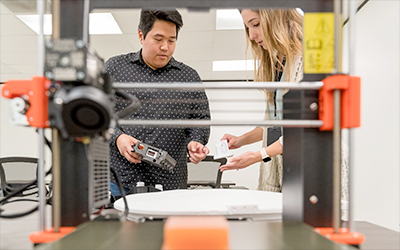 Above: Members of Axiom Space’s Extravehicular Mobility Unit (AxEMU) work on building the next generation spacesuit at the company’s Houston headquarters. The Axiom spacesuit is key to the company's commercial space services. This new NASA contract enables Axiom to build spacesuits that serve the company's commercial customers and future space station goals while meeting NASA's ISS and exploration needs. "Our innovative approach to xEVAS spacesuits provides NASA with an evolvable design that enables cost-efficient development, testing, training, deployment, and real-time operations to address a variety of EVA needs and operational scenarios for a range of customers, including NASA," said Michael Suffredini, Axiom Space's President & CEO. "We are immensely pleased that NASA recognizes the value Axiom Space is providing across a range of human spaceflight activities, from our recent private astronaut mission to the ISS to the design and development of Axiom Station, and now to providing this critical system and associated services for astronauts in LEO and beyond." Axiom Space has partnered with a strong team of industry experts on this contract including KBR, Air-Lock, David Clark Company, Paragon Space Development Corporation, Sophic Synergistics, and A-P-T Research. 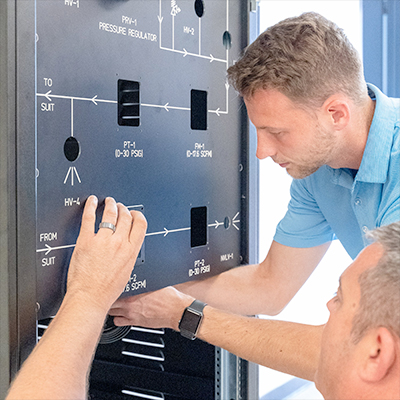 Above: Members of Axiom Space’s Extravehicular Mobility Unit (AxEMU) work on building the next generation spacesuit at the company’s Houston headquarters. The firm fixed price contract is structured as an Indefinite Delivery Indefinite Quantity (IDIQ) award over a 10-year ordering period and allows for two additional years for completion of services. Authorization to perform work under the xEVAS contract will be through the issuance of NASA task orders not to exceed $3.1B with a ceiling of $3.5B for all services. Axiom's xEVAS spacesuits will be designed to accommodate a wide range of crew members. Building off of NASA's xEMU spacesuit design, the Axiom spacesuits are created to provide increased flexibility and specialized tools to accomplish exploration needs and expand scientific opportunities in space. The xEVAS spacesuits design includes life support, pressure garments, and avionics. The Axiom Space team will provide EVA systems training and real-time operations support to NASA, among other services. NASA may order IDIQ services at any time after the contract starts with a period of performance beginning June 2022 and ending June 2032. No phase-in period is anticipated, and the work will be managed at Axiom's Houston facilities. 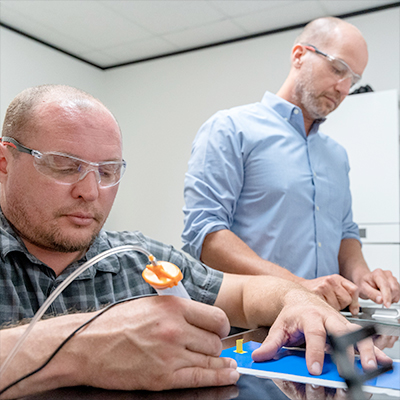 Above: Members of Axiom Space’s Extravehicular Mobility Unit (AxEMU) work on building the next generation spacesuit at the company’s Houston headquarters. This NASA contract win is the latest of Axiom Space's list of recent accomplishments in its efforts to grow the commercial space industry. Earlier this month Axiom Space celebrated the groundbreaking at the company's new, long-term headquarters at Houston Spaceport, which will be home to the development and construction of Axiom Station, the world's first commercial space station. Axiom Space also recently welcomed home the crew of Axiom Mission 1 (Ax-1) after successfully completing the first all-private astronaut mission to the ISS. The company has also signed agreements with several nations including Italy, Hungary, and the United Arab Emirates (UAE) to fly on future space missions. Axiom Space was founded in Houston in 2016 by space entrepreneur Kam Ghaffarian and Michael Suffredini – NASA's ISS Program Manager from 2005 to 2015 – to build the world's first commercial space station and develop commercial space infrastructure that will drive a thriving low-Earth orbit economy. The company currently employs more than 500 people, the majority of which work at its current Houston facilities and will grow the number to over 1,000 by 2023. |
Robert Pearlman
Editor Posts: 52647
From: Houston, TX
Registered: Nov 1999
|
 posted 06-01-2022 03:11 PM
posted 06-01-2022 03:11 PM
   
Collins Aerospace release Collins Aerospace selected to outfit the next generation of space explorersCollins Aerospace, a Raytheon Technologies business - along with teammates ILC Dover and Oceaneering - have been selected to produce NASA's next-generation spacesuit, which astronauts could wear when working outside the International Space Station and – within the next decade – on the moon. The new suits were designed by astronauts for astronauts and offer enhanced mobility and weigh less than the current generation spacesuits, allowing for increased mission times. The suits are also designed to accommodate nearly every astronaut body type and can rapidly incorporate new technologies. 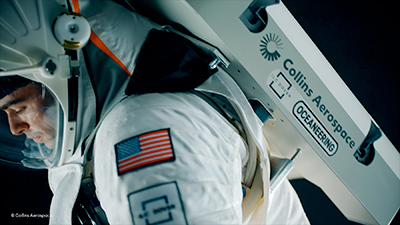 Above: Collins-led team to provide new spacesuit for ISS crew and Artemis moon missions. "Astronauts returning to the moon and venturing beyond need a spacesuit that's as modern as their new missions," said Dan Burbank, senior technical fellow at Collins Aerospace and former NASA astronaut. "The next-gen spacesuit is lighter, more modular, a better fit and easily adaptable, which means that wherever the journey into space may lead, our crew will be ready." Collins Aerospace designed the first spacesuit that allowed astronauts to walk on the moon, as well as the suit NASA astronauts currently use when operating outside the International Space Station. "Collins was there when the first man walked on the moon, and we'll be there when humankind goes back," said Phil Jasper, president of Mission Systems for Collins Aerospace. "We are excited to return to the Moon and build on our 50-year legacy of supplying EVA suits to NASA from the Apollo program to today on the International Space Station," said Patty Stoll, president of Space Systems at ILC Dover. "We look forward to partnering with NASA as their lunar spacesuit provider and inspiring the next generation through Artemis as we work to send the first woman and next man to the Moon." About Collins Aerospace Collins Aerospace, a unit of Raytheon Technologies Corp. (NYSE: RTX), is a leader in technologically advanced and intelligent solutions for the global aerospace and defense industry. Collins Aerospace has the extensive capabilities, comprehensive portfolio and broad expertise to solve customers' toughest challenges and to meet the demands of a rapidly evolving global market. About ILC Dover ILC Dover is a world-leader in the innovative design and production of space exploration technology including spacesuits, space habitats and inflatable landing systems. The company's spacesuits, Launch, Entry, and Abort (LEA), Extravehicular Activity (EVA) and Planetary Exploration Suits, have been worn during more than 250 space flights, six Moon landings, and over 3,000 hours of spacewalks without a single failure. Our customers will attest to our relentless dedication to high value products, advanced technology, and responsive service, as our visionary solutions have improved efficiency while safeguarding people, product, and infrastructure in hazardous conditions through flexible protective solutions since 1947. |
Robert Pearlman
Editor Posts: 52647
From: Houston, TX
Registered: Nov 1999
|
 posted 06-01-2022 10:04 PM
posted 06-01-2022 10:04 PM
   
collectSPACE NASA picks two companies to design next moon- and space-suitsWhen the next American astronauts walk on the moon, they will do so wearing spacesuits furnished either by the company behind the historic Apollo lunar garments or the firm building a commercial outpost to be tested at the International Space Station. NASA on Wednesday (June 1) selected Collins Aerospace and Axiom Space to develop, build and operate the next generation of U.S. spacesuits and spacewalk systems to be used outside of the space station and on Artemis missions to the moon. The two companies will vie for missions under the agency's Extravehicular Activity Services (xEVAS) contract, which has a potential total value of $3.5 billion to be awarded over the next 12 years. 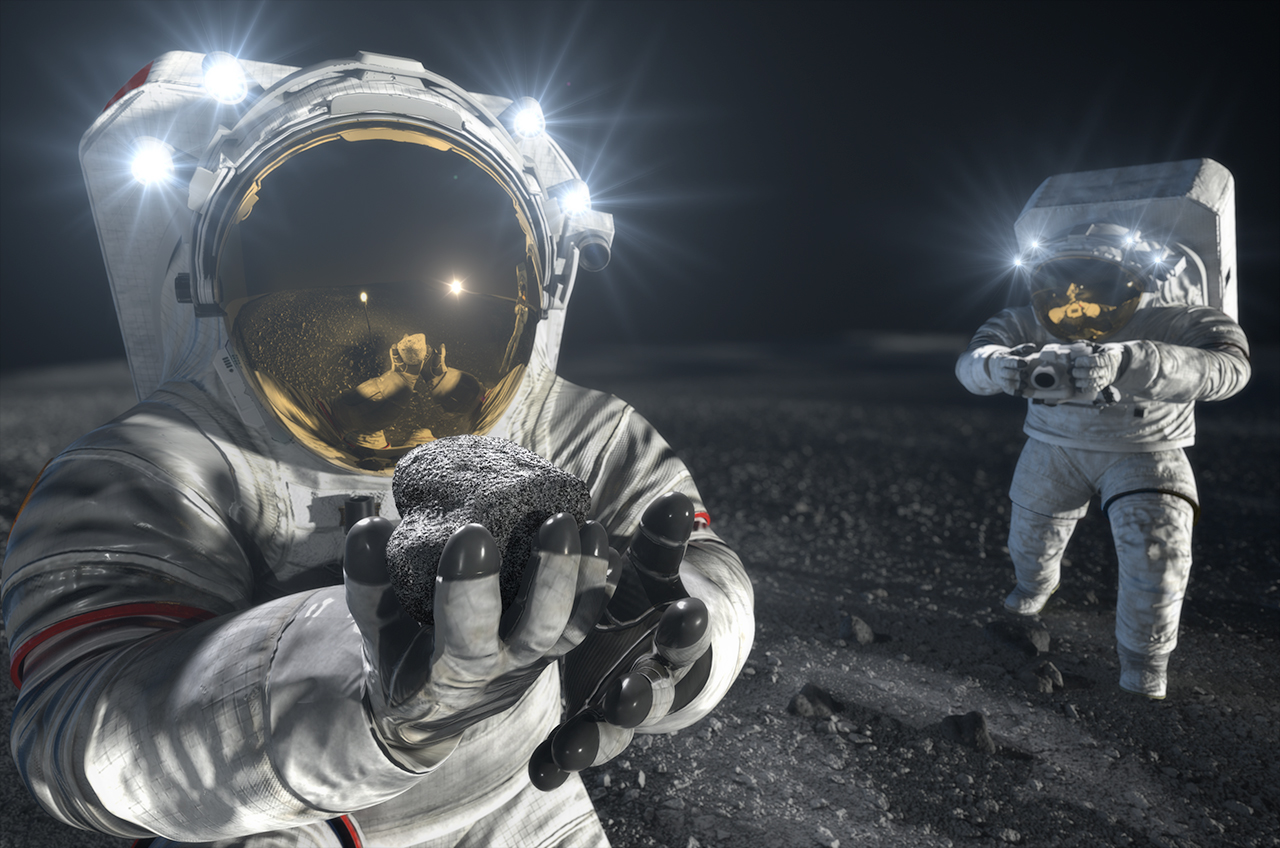 |
Robert Pearlman
Editor Posts: 52647
From: Houston, TX
Registered: Nov 1999
|
 posted 09-07-2022 04:47 PM
posted 09-07-2022 04:47 PM
   
NASA release NASA Taps Axiom Space for First Artemis Moonwalking SpacesuitsNASA has selected Axiom Space to deliver a moonwalking system for the Artemis III mission, which will land Americans on the surface of the Moon for the first time in over 50 years. This award – the first one under a competitive spacesuits contract – is for a task order to develop a next generation Artemis spacesuit and supporting systems, and to demonstrate their use on the lunar surface during Artemis III. With this award, NASA has put in place another cornerstone of returning astronauts to the Moon under Artemis to support continued scientific breakthroughs, benefiting humanity back on Earth. As part of its planned human lunar spaceflight missions, NASA will land the first woman and first person of color on the Moon. After reviewing proposals from its two eligible spacesuit vendors, NASA selected Axiom Space for the task order, which has a base value of $228.5 million. A future task order will be competed for recurring spacesuit services to support subsequent Artemis missions. "NASA is proud to partner with commercial industry on this historic mission that will kickstart the United States building a lasting presence on the surface of the Moon," said Lara Kearney, manager of NASA's Extravehicular Activity and Human Surface Mobility program. "What we learn on Artemis III and future missions on and around the Moon will pave the way for missions to Mars. Spacesuits enable us to literally take that next step." Using more than 50 years of spacesuit expertise, NASA defined the technical and safety requirements for the next generation of spacesuits. Axiom Space will be responsible for the design, development, qualification, certification, and production of its spacesuits and support equipment that will meet these key agency requirements for Artemis III. NASA experts will maintain the authority for astronaut training, mission planning, and approval of the service systems. Axiom Space will be required to test the suits in a spacelike environment before Artemis III. Under the indefinite delivery and indefinite quantity of the Exploration Extravehicular Activity Services contract, eligible industry partners compete for task orders that will provide a full suite of capabilities for NASA's spacewalking and moonwalking needs during the period of performance through 2034. Future task orders under the contract will consist of recurring lunar landings, the development of spacesuits for use in low-Earth orbit outside the International Space Station, and special studies. The agency is currently evaluating task order options for space station spacesuits. The spacesuits contract, which will advance spacewalking capabilities in low-Earth orbit and on the Moon, is managed by the Extravehicular Activity and Human Surface Mobility Program (EHP) at the agency's Johnson Space Center in Houston. |
Robert Pearlman
Editor Posts: 52647
From: Houston, TX
Registered: Nov 1999
|
 posted 09-07-2022 04:49 PM
posted 09-07-2022 04:49 PM
   
Axiom Space release Axiom Space wins NASA Task Order to Build Next Generation Spacesuits for Artemis IIICommercial space leader Axiom Space today (Sept. 7) announced it has been awarded the first task order of NASA's Extravehicular Activity Services (xEVAS) Contract. Under the terms of the task order, which has a base value of $228.5 million, the Houston-based company will build the space agency's next generation astronaut spacesuits to support the Artemis lunar missions. The new spacesuits by Axiom Space will provide astronauts with advanced capabilities for space exploration while providing NASA commercially developed human systems needed to access, live, and work in microgravity as well as on and around the Moon. 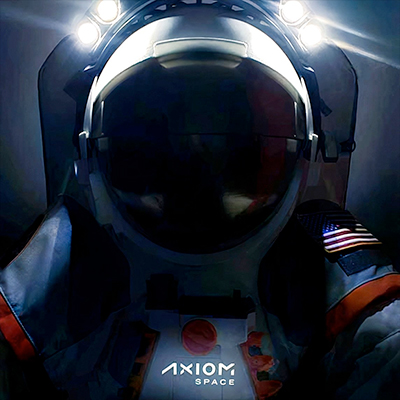 This is the first task order awarded under the firm fixed price contract Indefinite Delivery Indefinite Quantity (IDIQ) Contract, which extends over a 10-year ordering period and allows for two additional years for completion of services. Authorization to perform work under the xEVAS contract occurs through the issuance of NASA task orders not to exceed $3.1B with a ceiling of $3.5B for all services. "Our team at Axiom Space is honored to be awarded this first task order to build the next-generation spacesuit. We are excited to provide our expertise to meet NASA's exploration needs, while simultaneously serving our commercial customers in low Earth orbit and fulfill future space station goals that enable a commercial space economy," said Michael Suffredini, Axiom Space's President & CEO. "Our modernized, evolvable spacesuits will enable rapid upgrades to implement better, safer technologies over time, ensuring our astronauts are always equipped with high performing, robust equipment. We look forward to providing our space pioneers with advanced tools needed to further humanity's permanent expansion off the planet." NASA will land the first woman on the Moon wearing Axiom's xEVAS spacesuits beginning with Artemis III. Using innovative technologies and a flexible design, the xEVAS will enable exploration of more of the lunar surface than ever before. Returning to the Moon is vital for scientific discovery, economic benefits, and inspiration for a new generation of explorers: the Artemis Generation. Maintaining American leadership in space exploration will build a global alliance and advance deep space exploration to benefit all of humanity. Axiom's xEVAS spacesuits accommodate a wide range of crew members. Building off NASA's xEMU spacesuit design, the Axiom spacesuits are created to provide increased flexibility and specialized tools to accomplish exploration needs and expand scientific opportunities in space. The xEVAS spacesuits design includes life support, pressure garments, and avionics. The Axiom Space team will provide xEVA systems training and real-time operations support to NASA, among other services. Axiom Space has partnered with a strong team of industry experts on this contract including KBR, Air-Lock, Arrow Science and Technology, David Clark Company, Paragon Space Development Corporation, Sophic Synergistics, and A-P-T Research. |
Robert Pearlman
Editor Posts: 52647
From: Houston, TX
Registered: Nov 1999
|
 posted 07-10-2023 02:35 PM
posted 07-10-2023 02:35 PM
   
NASA release NASA Expands Options for Spacewalking, Moonwalking Suits, ServicesNASA has awarded Axiom Space and Collins Aerospace task orders under existing contracts to advance spacewalking capabilities in low Earth orbit, as well as moonwalking services for Artemis missions. The latest Exploration Extravehicular Activity Services task orders, each with a value of $5 million, are intended to have Axiom Space begin work on a spacesuit for use in low Earth orbit, and Collins Aerospace to begin work on a spacesuit for use on the lunar surface. Encouraging innovation in the suits and services available from both companies helps NASA further its missions for the benefit of humanity as part of its Moon to Mars exploration approach and obtain potential options should any development issues arise. "These task orders position NASA for success should additional capabilities become necessary or advantageous to NASA's missions as the agency paves the way for deep space exploration and commercialization of low Earth orbit," said Lara Kearney, manager of the Extravehicular Activity and Human Surface Mobility Program at NASA's Johnson Space Center in Houston. "Using this competitive approach we will enhance redundancy, expand future capabilities, and further invest in the space economy." Each contract provider has proposed a plan to continue developing their spacesuit to perform in an environment different from that outlined in the scope of their initial task order award. Axiom Space was previously awarded an initial task order to develop a spacewalking system for a demonstration in partial gravity on the lunar surface during Artemis III and will now begin early assessments for extending that suit for use outside the International Space Station. Likewise, Collins Aerospace was previously awarded an initial task order to develop a spacewalking system for a demonstration in microgravity outside the space station and will now begin early assessments for extending that suit for use on the lunar surface. Both vendors' assessments will provide NASA insight and redundancy for use of their suit systems despite the differences between low Earth orbit and the lunar surface, including different gravitational fields, natural space environments such as radiation, and mission tasks like floating in microgravity or walking in partial gravity. The providers will begin their design modification work through an initial milestone set by the awardee in their respective proposals for the task order's initial content. Following the completion of this initial step, NASA may exercise task order options to continue development. Should NASA decide to pursue the full extent of the follow-on task order options with a given provider culminating in a flight demonstration, the provider must complete all necessary safety and performance verifications before flight and ultimately complete a spacewalk or moonwalk at the respective destination. The contract enables selected providers to compete for task orders for missions that will provide a full suite of capabilities for NASA's spacewalking needs during the period of performance through 2034. The first task orders awarded were for the development and services for the first demonstration outside the space station in low Earth orbit and for the Artemis III lunar landing. The contract was designed to evolve with the needs of the agency and space industry and gives NASA a mechanism for adding additional capabilities and vendors as the commercial space services market evolves. NASA's investments in these additional capabilities will help bolster a strong commercial space industry. Each provider on the Exploration Extravehicular Activity Services contract will own the spacesuits it develops under the contract and can pursue other commercial customers and explore non-NASA commercial applications for the associated technologies. Expanding the commercial space services market is an important element of NASA's long-term goals of exploration in low Earth orbit and in deep space, including the Moon and Mars. |
Robert Pearlman
Editor Posts: 52647
From: Houston, TX
Registered: Nov 1999
|
 posted 06-26-2024 04:40 PM
posted 06-26-2024 04:40 PM
   
NASA release NASA Collins xEVAS UpdateIn 2022 and 2023, NASA awarded Collins Aerospace two task orders under the agency's xEVAS (Exploration Extravehicular Activity Services) contract. The first task order was to deliver a next generation spacesuit and spacewalking system for potential use on the International Space Station with a base value of $97.2 million. The second task order was to advance additional spacesuit capabilities with a base value of $5 million. After a thorough evaluation, NASA and Collins Aerospace have mutually agreed to descope the existing task orders on the Collins Exploration Extravehicular Activity Services contract. This descope includes ending the International Space Station suit demonstration, which was targeted for 2026. No further work will be performed on the task orders. This action was agreed upon after Collins recognized its development timeline would not support the space station's schedule and NASA's mission objectives. This change to the xEVAS contract has no impact on NASA's spacewalking capabilities on the space station. Collins will continue to support NASA's EMU (Extravehicular Activity Mobility Unit) spacesuit and is committed to supporting space station's ongoing spacewalking capabilities through the existing Extravehicular Space Operations Contract. | |
Contact Us | The Source for Space History & Artifacts
Copyright 1999-2024 collectSPACE. All rights reserved.

Ultimate Bulletin Board 5.47a
|
|

|
 advertisement advertisement

|

















